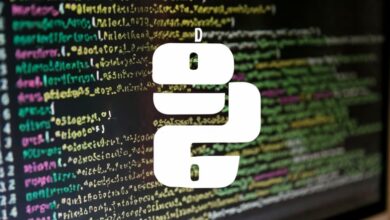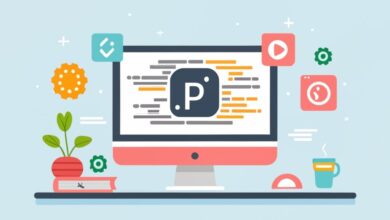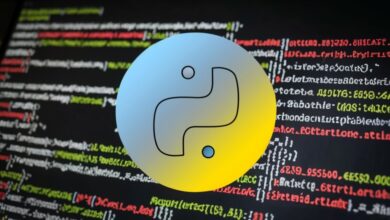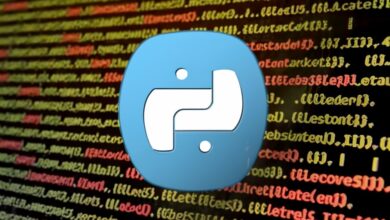
What are Python Data Types
Delving into the Data Depository: Your Guide to Python Data Types
In the ever-evolving world of Python, where lines of code weave intricate algorithms and unleash computational power, the foundation of every program lies in its data. But this data isn’t just a formless blob; it’s meticulously organized and categorized into distinct data types, each serving a specific purpose and empowering you to manipulate information with unmatched precision. This guide delves deep into the diverse realm of Python data types, equipping you with the knowledge to choose the perfect container for your data and unlock its boundless potential.
1. The Fundamental Five: Basic Building Blocks
At the heart of Python’s data ecosystem lie five fundamental types that lay the groundwork for more complex structures:
- Integers: Whole numbers like 10, -5, or 2048, perfect for counting, calculating, and representing discrete values.
- Floats: Numbers with decimals like 3.14, 9.81, or 1.618, ideal for scientific calculations, measurements, and continuous values.
- Strings: Sequences of characters enclosed in quotes, like “Hello, world!” or ‘This is a string’, representing text, names, or any sequence of symbols.
- Booleans: True or False values, the binary guardians of logic, controlling program flow and decision-making based on conditions.
- None: A special case signifying the absence of any data, often used as a placeholder or default value.
These basic types provide the building blocks for more intricate data structures.
2. Sequencing the Information: Lists and Tuples
When order matters, Python offers two dynamic ways to store data in sequence:
- Lists: Ordered collections of any data type enclosed in square brackets (
[]). They allow for flexible manipulation, modification, and element access by index.
Python
numbers = [1, 5, 7, 11]
fruits = ["apple", "banana", "orange"]
# Access specific elements by index
first_number = numbers[0]
last_fruit = fruits[-1]
# Add and remove elements dynamically
fruits.append("mango")
numbers.remove(5)
- Tuples: Similar to lists, but immutable (unchangeable after creation). Enclosed in parentheses (
()), they offer stability and security for data that shouldn’t be modified.
Python
person = ("Alice", 25, "Programmer")
# Access elements by index, but modification is not allowed
name = person[0]
age = person[1]
# Tuples can be used as keys in dictionaries for immutability
3. Mapping the Connections: Dictionaries and Sets
When relationships and associations take center stage, Python provides two powerful structures:
- Dictionaries: Unordered collections of key-value pairs enclosed in curly braces (
{}). Each key uniquely identifies a corresponding value, allowing for efficient data retrieval and organization.
Python
profile = {"name": "Bob", "age": 30, "skills": ["Python", "Java"]}
# Access values using their associated keys
age = profile["age"]
skills = profile["skills"]
# Add and update key-value pairs dynamically
profile["job"] = "Software Engineer"
profile["skills"].append("C++")
- Sets: Unordered collections of unique elements represented by curly braces (
{}). Sets prioritize uniqueness and are ideal for eliminating duplicates or checking membership.
Python
unique_fruits = {"apple", "banana", "mango", "apple"} # Duplicates are ignored
# Check for element membership
is_citrus = "orange" in unique_fruits
# Set operations like union and intersection are efficient for combining and analyzing data
4. Beyond the Basics: Advanced Data Types
As your coding adventures progress, explore these advanced data types to tackle more complex tasks:
- Files: Store and access data persistently on your computer using file objects.
- Classes and Objects: Define custom data structures with specific attributes and methods using object-oriented programming principles.
- Modules and Packages: Import pre-written code from external libraries to expand your capabilities without reinventing the wheel.
5. Choosing the Right Tool: Matching Data Types to Your Needs
Remember, the key to mastering data types lies in understanding their strengths and weaknesses. Ask yourself:
- Do I need to maintain order? Use lists or tuples.
- Is immutability crucial? Opt for tuples.
- Do I need key-value associations? Choose dictionaries.
- Is eliminating duplicates essential? Utilize sets.
By carefully considering your data’s characteristics and purpose, you can select the ideal data type to optimize your program’s efficiency, clarity, and readability.
6. Mastering the Art of Data Manipulation: Beyond Storage
With the right data types in your arsenal, the next step is mastering their manipulation. Python provides a vast array of built-in functions and operators to:
- Perform calculations: Add, subtract, multiply, and divide using basic arithmetic operators.
- Access and modify elements: Utilize indexing and slicing techniques to retrieve specific data or modify subsets within your structures.
- Iterate through data: Loop through lists, dictionaries, and other sequences to process each element individually.
- Sort and filter data: Organize and refine your data based on specific criteria using sorting and filtering functions.
- Convert between data types: Transform data from one type to another for diverse operations using dedicated functions like
int(),float(), orstr().
Remember, practice is key! Experiment with different data types, explore built-in functions, and tackle coding challenges to hone your data manipulation skills.
7. A Treasure Trove of Resources: Where to Learn More
The journey of mastering data types doesn’t end here. To further your exploration, check out these valuable resources:
- The official Python documentation: A comprehensive reference guide for all data types, functions, and operators.
- Interactive tutorials and platforms: Sites like Codecademy, DataCamp, and Coursera offer hands-on exercises and guided learning paths to solidify your understanding.
- Books and tutorials by Python experts: Dive deeper with dedicated resources like “Automate the Boring Stuff with Python” by Al Sweigart or “Python Crash Course” by Eric Matthes.
- Thriving online communities: Join forums like Stack Overflow or Reddit Python to ask questions, share your progress, and learn from other programmers’ experiences.
8. Remember: Data Types are the Building Blocks of Success
In conclusion, understanding and utilizing Python data types effectively forms the foundation of any successful program. By choosing the right type for your needs, mastering manipulation techniques, and continuously expanding your knowledge, you can transform your data into powerful tools for solving problems, analyzing information, and unlocking the full potential of your Python coding journey.
So, keep exploring, experimenting, and honing your data-wrangling skills. The Python world awaits, and with the right knowledge of data types, you’ll be equipped to navigate its challenges and create something truly remarkable!
I hope this completes your guide and provides a comprehensive and informative resource for anyone delving into the fascinating world of Python data types!




